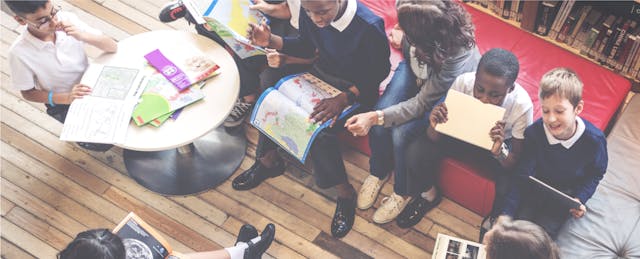Education eats good ideas. It boils down its best levers for change into cliches and shells of ideas. The complex is turned into checklists and clickbait.
Modern classroom design is sitting on this precipice. As more teachers and leaders race for tables on wheels and bouncy chairs in the name of flexible seating, the heart of this transformational change is ripped out of our hands. What then happens is instead of designing classrooms that positively impact students, we are decorating classrooms, celebrating the new, and then moving on to the next shiny thing. Pinterest-pretty classrooms bring instant gratification, but little else.
How can we reclaim this important necessary work and make school and classroom design impactful in all schools? It starts with the designer’s mindset. As educator Pernille Ripp recently reminded us, what is flexible furniture without flexible learning? I would go further to say, what is flexible learning without the long-term flexible mindset needed to meet the changing needs of the kids we serve? A designer’s mindset is based on noticing the invisible so it can be seen again, and noticing the things that subtly impact learning. Designers aren’t led by momentum, inertia, tradition or the latest education fads. They design based on feedback that they gather from students, parents and the entire learning community.
Designers are researchers and learners. There is emerging research from Europe and Australia around space design. Designers are connecting with places like the University of Melbourne, Steelcase, and Meteor Education who are doing the action research on current best practices. They look for great examples from places like New Zealand where almost all of the public schools are on a journey toward modern learning spaces. Designers aren’t trying to justify their work on individual pieces of research that are stretched to apply to space design.
Teachers and leaders that are thoughtful about this work are looking beyond Pinterest boards for ideas. They are gathering ideas from nature and brain research. In nature, they find that biomimicry, or natural solutions, can support their design work. They look at a nest as inspiration for how classrooms that envelop the learner, enriches them, and then release them to do amazing things. In brain research, they recognize that all humans visual processes every space in which they enter, and in knowing this are thoughtful about not exhausting students visually with colors, posters, and other unneeded decorations.
Leading space design means thinking holistically about how the outside of the building, entryway, hallway, bathrooms, and teachers’ lounge all tell the non-verbal story of the school. Leaders also know that spaces, designed well, care for students and teachers. They protect them from outside stressors and allow the time and space needed for meaningful learning to happen.
Teachers as designers are thinking about space for collaboration, creation, and quiet. They also know that subtraction (with a $0 impact on the budget) can sometimes do more than adding furniture or flexible seating. Teacher designers also know that space design isn’t something that you finish or check off the list. It is a journey, a mindset, and part of the change path to better learning.
Designing modern classrooms doesn’t need to become another fad, but it requires us all to design with students and not for them. It means remaining nimble and agile in the way we design, so that pedagogy and technology tools can engage and ignite learners.
Join the conversation. There are tons of amazing designers using the hashtag #learningspaces. Pick up a design based book on learning spaces (HERE, HERE, HERE, or HERE). Take time to re-notice your space. Consider how the perimeter of the room impacts learning. Notice the interaction geography as it relates to the movement potential in your room. Be aware of sound, light and color. Ask more questions. All of these opportunities will help you avoid the fad, stay focused, and support modern learning spaces for all students.


